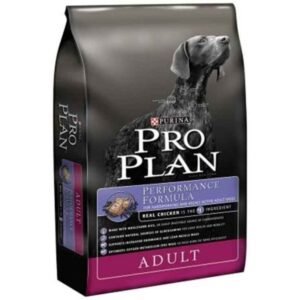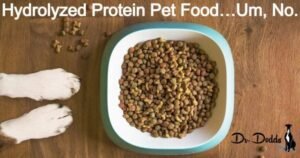Benefits, Uses, and Considerations
Dog food with hydrolysed protein has been a major solution for pets with particular dietary needs in recent years. For dogs who suffer from gastrointestinal problems, allergies, or sensitivities, this particular kind of food is frequently advised. However, what is hydrolysed protein exactly, and how does it help our dog friends? The science of hydrolysed protein dog food, along with its benefits, possible downsides, and useful advice for pet owners, will all be covered in this book.
1.What is Hydrolyzed Protein Dog Food?
1.1 Definition and Process
Dog food with hydrolysed protein is made with proteins that have been divided into more digestible, smaller pieces. Proteins are treated with water and enzymes in a procedure called hydrolysis to convert them into peptides, which are less complex than the original protein molecules. Dogs are less prone to experience allergic reactions when exposed to these smaller peptides.
1.2 The Hydrolysis Process
Enzymatic Hydrolysis:
Particular enzymes are used in the breakdown of proteins. The production of hypoallergenic pet food frequently uses this technique.
Acid or Alkaline Hydrolysis:
Proteins can be broken down into smaller pieces by treating them with acidic or alkaline solutions. Although less often, this technique can be applied to select commercial goods.
1.3 How Hydrolyzed Proteins Differ from Standard Proteins
Standard proteins in dog food are frequently bigger molecules that the dog’s immune system may occasionally recognise as allergies. Because hydrolysed proteins are smaller, the immune system is less likely to mistake them for alien substances, which lowers the possibility of allergic reactions.
2.Benefits of Hydrolyzed Protein Dog Food
2.1 Reduced Allergy Risk
Dogs with dietary intolerances or allergies can benefit from diets high in hydrolysed protein. The immune system is less likely to respond to the smaller protein fragments, which helps control and avoid allergic reactions.
Case Studies and Research:
Hydrolysed protein diets have been demonstrated in numerous studies to be beneficial in mitigating the symptoms of food allergies in dogs, such as itchiness, ear infections, and upset stomach.
2.2 Improved Digestibility
Proteins are easier to digest thanks to the hydrolysis process, which is advantageous for dogs that have digestive problems or sensitive stomachs.
Gastrointestinal Benefits:
Less digestive problems, such as gas, diarrhoea, and vomiting, may result from easier digestion. Dogs with long-term digestive issues should pay special attention to this enhanced digestibility.
2.3 Enhanced Nutritional Absorption
Hydrolysed proteins are more easily absorbed by the dog’s digestive tract because they are disassembled into smaller parts. Better general nutrition and health may result from this increased absorption.
Nutritional Benefits:
Enhancing absorption can guarantee that dogs get the vital nutrients they need, supporting their general health and wellbeing.
2.4 Specific Use Cases
Dogs with Chronic Conditions:
For dogs suffering from long-term ailments like inflammatory bowel disease (IBD) or chronic pancreatitis, hydrolysed protein meals are frequently advised.
Puppies and Senior Dogs:
Puppies and elderly dogs require particular attention. At every stage of life, hydrolysed protein diets can help manage allergies and sensitivities.
3.Potential Drawbacks and Considerations
3.1 Cost Considerations
Dog feeds with hydrolysed protein are frequently more costly than those with regular protein. The intricate manufacturing procedure and the speciality ingredients are to blame for this increased expense.
Budget-Friendly Alternatives:
Although diets containing hydrolysed protein can be expensive, some pet owners may be able to discover less expensive options that still meet their dog’s nutritional needs.
3.2 Limited Availability
Not all pet food brands offer hydrolyzed protein options, which can limit choices for pet owners.
Finding the Right Brand:
Selecting reliable companies that offer premium hydrolysed protein dog food is crucial. Pet owners can choose the best product for their animals with the help of research and veterinarian recommendations.
3.3 Potential for Nutritional Imbalance
Foods containing hydrolysed protein can help with certain problems, but if the meal is poorly prepared, there could be a risk of nutritional imbalance.
Ensuring Balanced Nutrition:
It is important for pet owners to make sure that the hydrolysed protein meal offers a well-rounded diet that includes the right amounts of vitamins, minerals, and other nutrients.
4.Choosing the Right Hydrolyzed Protein Dog Food
4.1 Key Ingredients to Look For
Protein Sources:
Seek out high-quality, specially formulated hydrolysed protein sources that are hypoallergenic.
Additives and Fillers:
Steer clear of items that include needless fillers or additives as they can lower the overall efficacy and quality of the diet.
4.2 Consulting Your Veterinarian
Speak with your veterinarian before putting your dog on a diet high in hydrolysed protein. They can offer recommendations for the best foods based on the particular medical requirements and conditions of your dog.
4.3 Transitioning to a New Diet
When introducing a new diet, it’s crucial to transition gradually to avoid digestive upset.
Transition Process:
Gradually mix the new hydrolyzed protein food with your dog’s current food over a period of 7-10 days, increasing the amount of new food while decreasing the old food
5.Case Studies and Success Stories
5.1 Real-Life Examples
Case Study 1:
A dog with severe food allergies experiences significant improvement in skin condition and overall health after switching to hydrolyzed protein food.
Case Study 2:
A dog with chronic gastrointestinal issues sees a reduction in symptoms such as diarrhea and vomiting after dietary change
5.2 Testimonials from Pet Owners
Owner Testimonial 1:
Insights from a pet owner whose dog’s quality of life improved significantly with a hydrolyzed protein diet.
Owner Testimonial 2:
Experiences from another pet owner who found the transition to hydrolyzed protein food to be beneficial in managing their dog’s allergies
6.Conclusion
For the specialised management of food allergies, sensitivities, and gastrointestinal problems in dogs, hydrolysed protein dog food is available. Many pet owners find it to be a beneficial option despite its potential higher pricing and limited availability. This is due to its benefits, which include reduced allergy risk, greater digestibility, and enhanced nutritional absorption. You can make sure your dog gets the finest treatment possible by choosing a high-quality product with care and seeking advice from a veterinarian.
Comprehending the function of hydrolysed protein in dog food enables pet owners to make wise choices that promote the health and welfare of their canine companion.


Pingback: Where to buy the farmer's dog food? - Dog food options